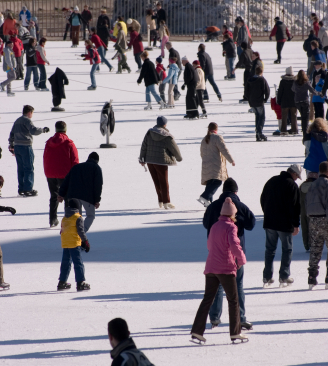According to recent estimates,
over 82,000 people will seek medical treatment this coming year for
injuries suffered while skiing, 62,000 will be injured playing hockey,
37,000 snowboarding, and 25,000 while sledding. Over 270,000 Americans
are expected to visit hospital emergency rooms after suffering winter
sports-related injuries this year.
These numbers are just the tip of the proverbial iceberg, since they do not include visits to health care professionals in a non-emergency room setting. Total health care costs for these injuries, including medical, legal, and other expenses will exceed two billion dollars this year alone.
The vast majority of these injuries are preventable.
In an effort to reduce the number of winter sports injuries, The Institute for Preventative Sports Medicine, in partnership with the American Academy of Orthopedic Surgeons has, over the past several years, worked to develop the following safety and prevention recommendations:
General recommendations:
- Follow an off-season conditioning program
- Buy and maintain well-fitted equipment
- Warm up and stretch before any winter sports activity
- Stop when your body tells you to (i.e. remember, the vast majority of injuries are sustained when the individual is tired from having participated in the activity for too long a period of time without resting)
- Abide by all rules and markings, whether they are on the slopes or the hockey rink.
- Make sure all participants are adequately hydrated. We tend to think that dehydration only occurs in the summer months, or when the weather is hot but dehydration can also occur in the winter months with strenuous activities. Make sure your child drinks adequate fluids before, during and after activities in order to avoid becoming dehydrated.
Skiing
- Buy boots and bindings that have been set, adjusted and maintained according to the American Society of Testing Materials (ASTM) recommendations.
- Check the binding of each ski each time before skiing. The binding should be adjusted based on the skier's height and weight.
- At the start of each new ski day be sure to engage in warm up activities and take several slow runs before tackling the more difficult slopes.
- Stay on marked trails at all times.
- If possible, ski with partners and stay within sight of each other.
- Rest when fatigued.
- Wear helmets at all times. The late entertainer and Congressman Sonny Bono is a testament to the fact that, no matter how advanced the skier, there is a risk of collisions with other skiers or with stationary objects such as trees or rocks. Wearing a helmet can prevent a catastrophic head injury.
- Carry a cell phone in the event of an emergency.
Hockey
- Helmet and a full-face shield at all levels of play
- Shoulder pads
- Elbow pads
- Hip pads
- Gloves
- Mouth guard
- Eyeglasses (if worn) made of non-breakable 3mm polycarbonate, which are twenty time stronger than ordinary eyeglasses
- Enforce the ban on checking to the head.
Cross-country skiing
The vast majority of injuries are due to overuse. Therefore, an adequate warm up and conditioning program is of paramount importance in preventing cross-country skiing injuries.
Sledding
The vast majority of sledding injuries are related to impact and inadequate use of the sled itself. Recommendations include:
- Requiring all participants to sit in a forward facing position steering with their feet or a rope tied to the steering handles of the sled.
- No head first sledding
- Wearing a helmet
- No sledding on slopes that end in a street, parking lot, or body of water.
- No sledding on plastic sheets or other materials that can be pierced by a stick or a rock, which can lead to significant injury.








